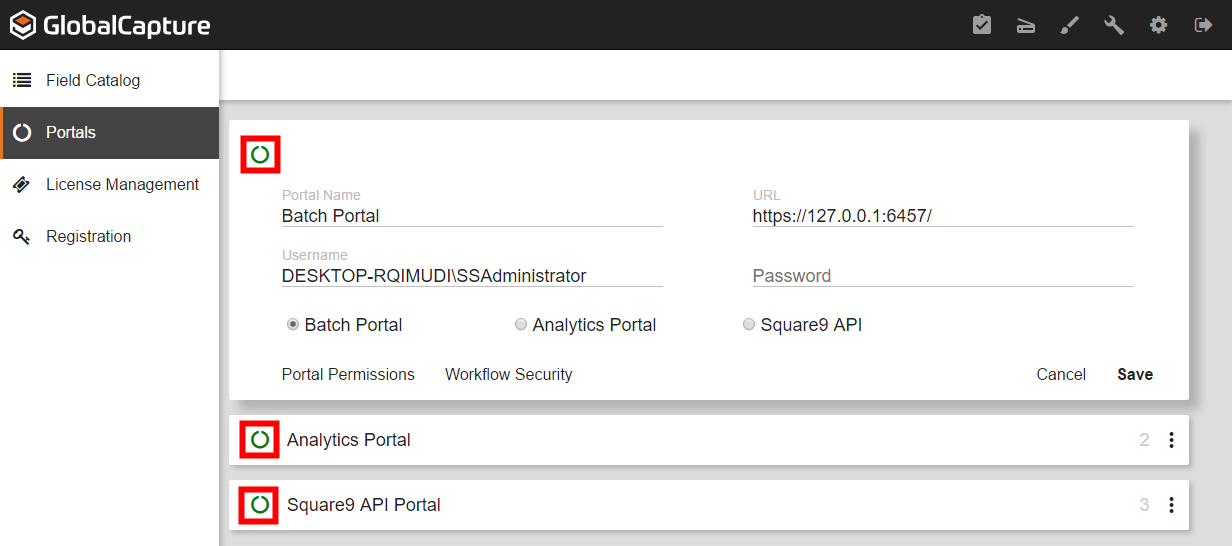The user account “SSAdministrator” is the service account used to proxy all document and data access requests to individual clients. This account is used when authorizing access for most Square 9 Windows Services, in addition to acting as the Application Pool user for both GlobalSearch and GlobalCapture. When GlobalSearch is installed it creates the SSAdministrator account and requires that the user performing the installation create a . While a complex password is not required by GlobalSearch, it must comply with your system’s password requirements for the application to work properly. The password is case sensitive.
Change Password in Application Pools
The Application Pool identity of the GlobalSearch and GlobalCapture application pool needs to be updated to reflect the new password.
- Open the Microsoft Internet Information Services Manager (IIS) on the GlobalSearch server.
- Expand the server to see the
Application Pools folder.
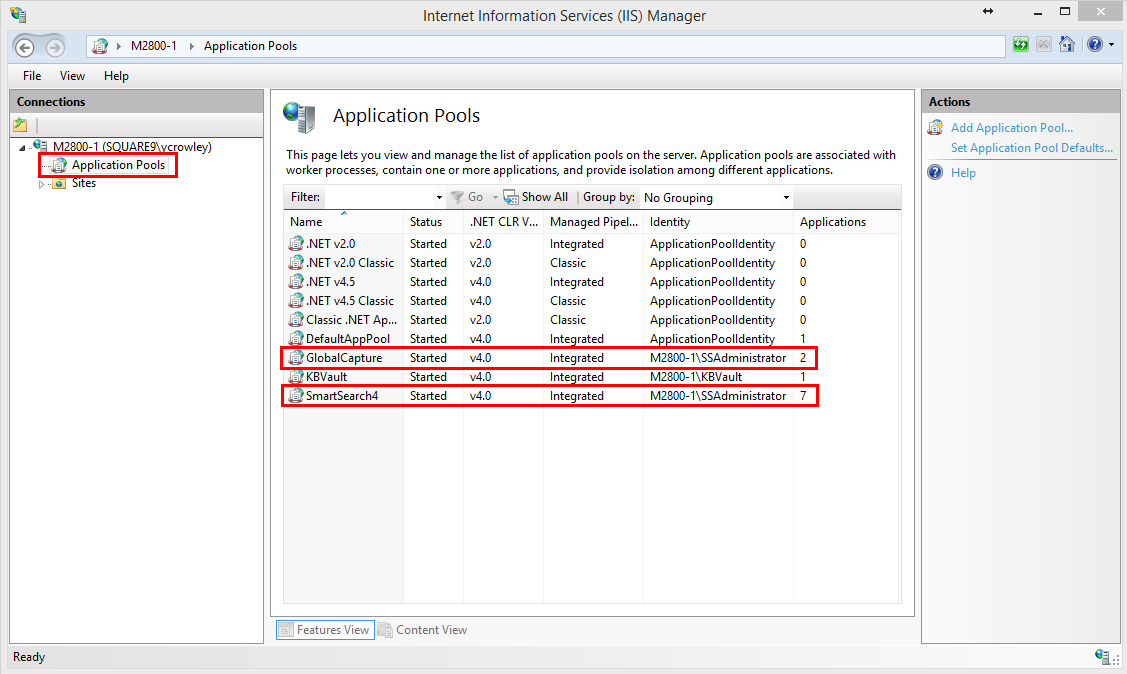
- Within the
Application Pools folder, right-click on the SmartSearch4 application pool and select Advanced Settings from the context menu.
- In the Advanced Settings window, under the Process Model section, click on the Identity tab.
- To edit the Identity, click the More (three dots) button.
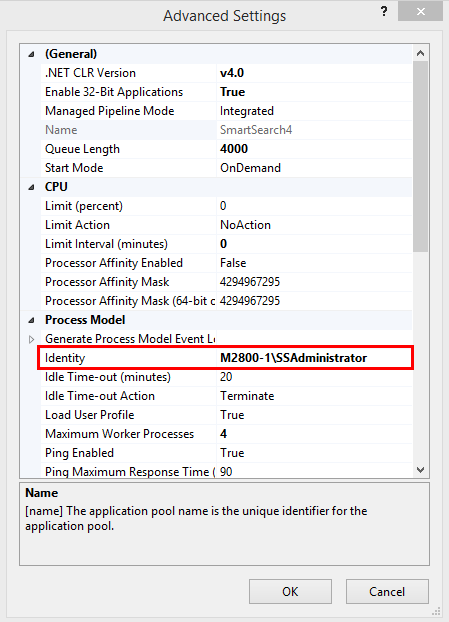
- In the Application Pool Identity window, select Custom account and click Set.
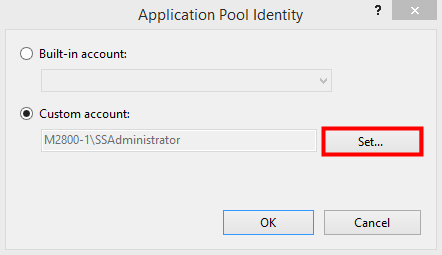
- In the Set Credentials window that appears, enter the credentials of the local or domain SSAdministrator:
- Enter the local or domain username of the SSAdministrator in the User name text box.
- Enter the password of the SSAdministrator in the Password text box.
- Confirm the password in the Confirm password text box.
Your domain location will depend on where you want your users to be located and authenticated from. For local installations, users will be on the Local System, therefore you will need to use the local SSAdministrator. For domain installations, users will be on the domain in the Active Directory therefore, you will need to use the domain SSAdministrator account.
- In the Advanced Settings, Application Pool Identity, and Set Credentials windows, click OK.
- If the SmartSearch4 application pool is not currently running, right-click on it to select it and then in the context menu, click Start.
- Repeat steps 3 through 9 for the GlobalCapture application pool.
- Once the identity has been updated, make sure the application pool is running. If it’s not, right-click on the pool and select Start from the context menu.
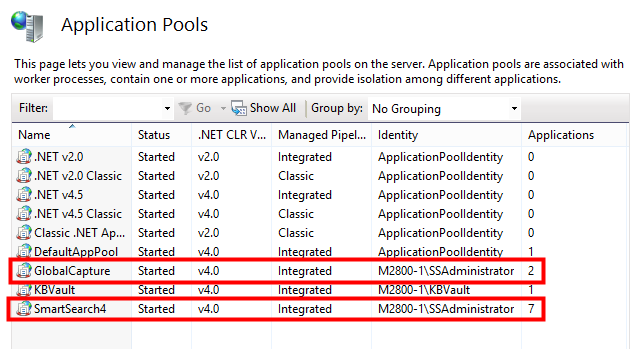
Update Services
Since GlobalSearch version 4.2, the Service Console has been released as an efficient way to update all GlobalSearch services, although the services can still be accessed through the normal Windows Service menu. All GlobalSearch services must be updated from the Services Console for permissions to be properly applied; the ssContentSearch service is the only exception. To set the ssContentSearch service permissions, please use the procedure in the “Update the ssContentSearch Service” section below.
Run the Service Console
- Right-click on the Service Console and click Run as an Administrator. The console is located
C:\GetSmart, or wherever the GetSmart directory is stored.
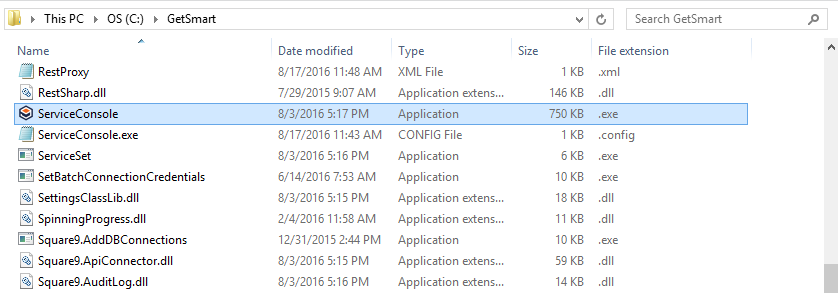
- Once the console is open, to stop all the services, click Stop All.
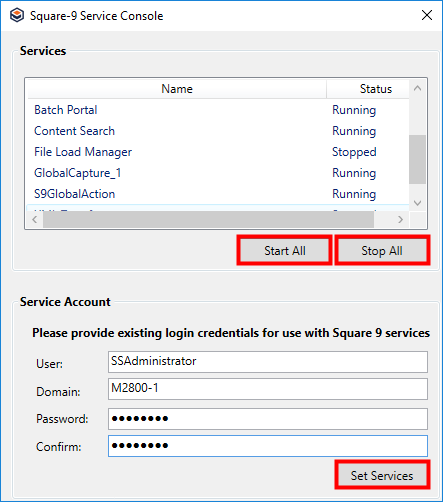
- Enter in the SSAdministrator or the service user in User text box and the corresponding password in the Password and Confirm text boxes.
- Click Set Services. A minute wait time is required before you can restart the services.
- Once a minute has passed, click Start All. The services will restart one by one.
- Once all the services have been started, close the service console.
Update the ssContentSearch Services
- Launch the Windows Service menu. This can be reached by running
Services.msc, or it can be found under your Administrative Tools.
- Right-click on the ssContentSearch service and go to Properties.
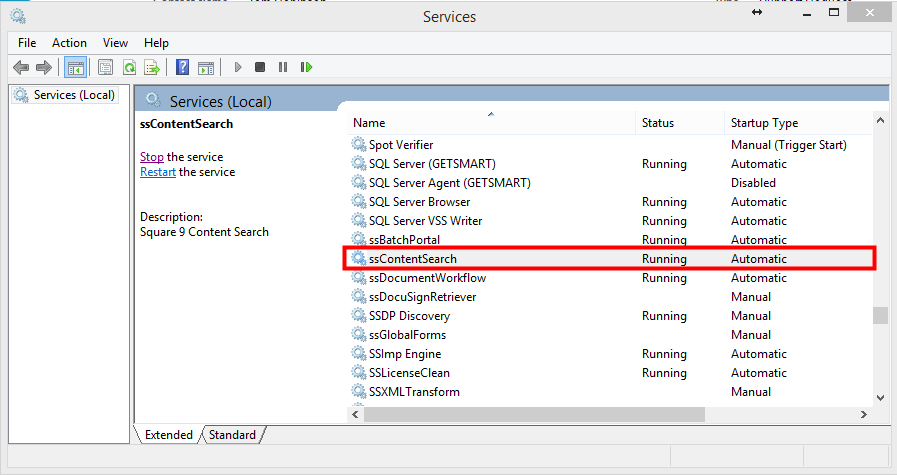
- In ssContentSearch Properties, on the Log On tab, change the logon user in the This account text box.
- Click Browse and select the SSAdministrator. The user you will use should be the same user entered in the Service Console and the Application Pools. Verify that the domain name is consistent with the other applications.
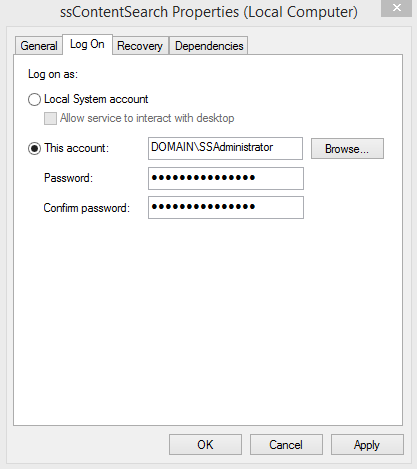
- Enter the updated password in the Password and Confirm password text boxes and click OK.
- In the Windows Service Menu, verify any other service running as the SSAdministrator has been updated as well. Both the S9 GlobalAction and the GlobalCapture_1 services will most likely stay running as Local System. This is normal and they can function without issue as Local System. Depending on your installation, these services may have been changed to run as the SSAdministrator user instead. If so, you will need to update them using steps 2 through 5.
Update GlobalCapture Portals
The GlobalCapture Portals are the last section that will need to be updated.
- Browse to the GlobalCapture menu.
- Once signed in, click the Manage (
 ) icon.
) icon.

- From the menu on the left, select Portals. By default, there are three portals installed: Batch Portal, Analytics Portal, and Square9 API Portal. All three portals run off the SSAdministrator or service user. If you have additional portals, all of them will need to be updated as well.
- Click on the More Options (
 ) icon and select Edit.
) icon and select Edit.

- Verify that the SSAdministrator is listed as either the domain or local user, depending on your installation. If need be, change the username to correspond with the user used in the previous “Application Pools” and “Services” steps.
- Enter in the new password in the Password text box.
- To finish, click Save.
- Repeat steps 4 through 5 for the other portals until all passwords have been updated. The Test Connection (circle) icons located in the top left of each row to should now be green to indicate successful Portal connections.
